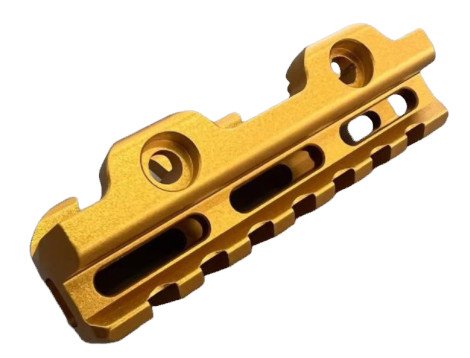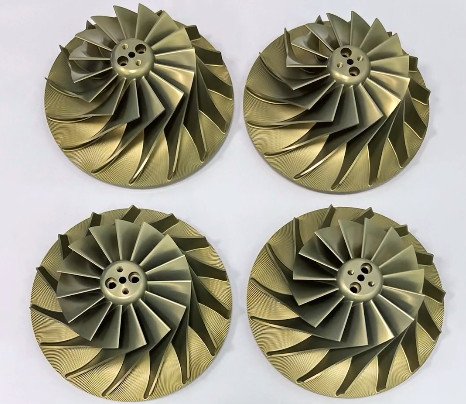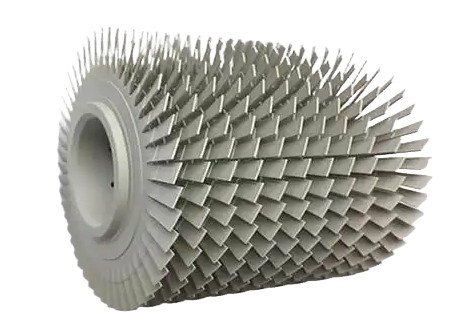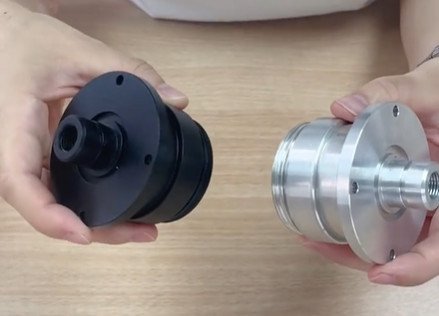Anodizing aluminum is an electrochemical process that enhances the metal’s surface by forming a durable, corrosion-resistant oxide layer. This guide provides a comprehensive overview of the anodizing process, its types, detailed parameters, and practical applications. Designed for engineers, manufacturers, and professionals, the content focuses on technical precision and systematic understanding.
Understanding the Anodizing Process
Anodizing is an electrolytic passivation process that thickens the natural oxide layer on aluminum. The aluminum part acts as the anode in an electrolytic cell, submerged in an acidic electrolyte, typically sulfuric acid. When electric current is applied, oxygen ions from the electrolyte combine with aluminum atoms, forming a porous aluminum oxide layer (Al₂O₃). This layer integrates with the substrate, preventing chipping or peeling, unlike coatings like paint.
The process involves several steps: cleaning, pre-treatment, anodizing, coloring (optional), and sealing. Each step requires precise control to ensure uniform coating thickness, adhesion, and performance. The resulting oxide layer improves corrosion resistance, wear resistance, and provides a base for dyes or sealants.
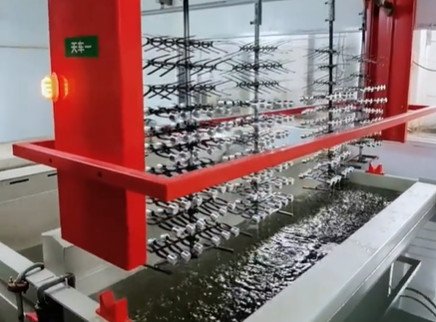
Key Steps in Anodizing Aluminum
The anodizing process is systematic, with each step contributing to the final coating quality. Below is a detailed breakdown of the steps involved:
1. Cleaning
Cleaning removes contaminants like oils, grease, or dirt from the aluminum surface. A non-etching alkaline detergent, heated to approximately 145°F (63°C), is commonly used. Multiple rinses with deionized water follow to ensure a clean surface, as contaminants can cause uneven anodizing or poor adhesion.
2. Pre-Treatment (Etching and Desmutting)
Etching involves immersing the aluminum in a caustic soda (sodium hydroxide) solution to remove a thin layer of metal, creating a matte appearance. This step ensures uniformity. Desmutting follows, using an acidic solution (e.g., nitric acid) to remove alloy constituents left by etching. These steps prepare the surface for anodizing.
3. Anodizing
The aluminum is submerged in an electrolyte bath, typically 15-18% sulfuric acid, with the part acting as the anode and the tank as the cathode. A direct current (DC) is applied, with parameters such as:
- Voltage: 12-20 V
- Current Density: 1-2 A/dm²
- Temperature: 68-77°F (20-25°C)
- Time: 20-60 minutes
These parameters control the oxide layer thickness, typically ranging from 8-25 µm for standard anodizing. The porous structure forms hexagonal cells, with pore sizes influenced by voltage and electrolyte concentration.
4. Coloring (Optional)
Coloring utilizes the porous oxide layer’s ability to absorb dyes or metal salts. Methods include:
- Absorptive Dyeing: Organic or inorganic dyes are applied, offering colors like black, red, or blue.
- Electrolytic Coloring: Metal salts (e.g., tin) are deposited in pores using AC current, producing bronze, black, or gold tones.
- Interference Coloring: A thicker metal layer alters light reflection, creating colors like green or yellow.
Color consistency depends on alloy type, oxide thickness, and dyeing time.
5. Sealing
Sealing closes the porous oxide layer to enhance corrosion resistance. Common methods include hydrothermal sealing in hot water (185-212°F or 85-100°C) or chemical sealing with nickel salts. Sealing transforms aluminum oxide into aluminum hydroxide (Al(OH)₃), filling pores and improving durability.
Types of Anodizing Processes
Anodizing processes vary based on electrolyte, voltage, and intended application. The main types are summarized in the table below:
| Type | Electrolyte | Coating Thickness | Voltage | Applications |
|---|---|---|---|---|
| Type I (Chromic Acid) | Chromic Acid | 2-5 µm | 20-40 V | Aerospace, thin coatings |
| Type II (Sulfuric Acid) | Sulfuric Acid (15-18%) | 5-30 µm | 12-20 V | Architectural, consumer goods |
| Type III (Hard Anodizing) | Sulfuric Acid (10-15%) | 25-150 µm | 20-100 V | Industrial, high-wear parts |
Type I: Chromic Acid Anodizing
Type I uses chromic acid as the electrolyte, producing a thin oxide layer (2-5 µm). It operates at 20-40 V and 30-40°C. The coating is less porous, limiting dye absorption, but offers excellent corrosion resistance. It is ideal for aerospace components due to its minimal impact on fatigue strength.
Type II: Sulfuric Acid Anodizing
Type II, the most common method, uses a 15-18% sulfuric acid electrolyte at 12-20 V and 20-25°C. The coating thickness ranges from 5-30 µm, with a porous structure suitable for dyeing. It balances cost, durability, and aesthetics, making it popular for architectural and consumer applications.
Type III: Hard Anodizing
Type III, or hard anodizing, uses a 10-15% sulfuric acid electrolyte at higher voltages (20-100 V) and lower temperatures (0-5°C). The coating, 25-150 µm thick, is denser and harder (up to 800 HV), ideal for high-wear applications like gears or valves. However, it may reduce fatigue strength due to its thickness.
Critical Parameters in Anodizing
Anodizing quality depends on controlling several parameters, detailed below:
| Parameter | Typical Range | Impact |
|---|---|---|
| Voltage | 12-100 V | Higher voltage increases coating thickness and pore size |
| Current Density | 1-3 A/dm² | Affects growth rate and uniformity |
| Electrolyte Concentration | 10-18% (Sulfuric Acid) | Influences pore structure and dissolution rate |
| Temperature | 0-25°C | Lower temperatures yield harder coatings |
| Time | 20-120 minutes | Longer times increase thickness, up to a limit |
These parameters must be tailored to the alloy and application. For example, 6061 aluminum requires lower current density than 7075 due to differences in alloy composition.
Applications of Anodized Aluminum
Anodized aluminum is used across industries due to its enhanced properties. Key applications include:
Aerospace
Type I and III anodizing are common for aircraft components like wing panels, landing gear, and engine parts. The coatings provide corrosion resistance and withstand extreme temperatures.
Automotive
Type II anodizing is used for wheels, trim, and engine components, offering corrosion resistance and aesthetic appeal. Hard anodizing (Type III) is applied to high-wear parts like pistons.
Architecture
Type II anodizing is popular for window frames, facades, and railings, providing weather resistance and color options. Class I coatings (18 µm) are specified for exterior use.
Consumer Goods
Anodized aluminum is used in electronics (e.g., laptop cases), cookware, and sporting equipment due to its durability, lightweight nature, and aesthetic versatility.
Considerations in Anodizing
While anodizing is highly effective, certain considerations arise:
- Alloy Selection: Alloys like 6063 and 5005 anodize better than 7075, which may show inconsistent finishes due to high zinc content.
- Threaded Components: Anodizing increases dimensions, potentially causing binding in threaded parts. Oversized taps or post-anodizing chasing may be needed.
- Fatigue Strength: Thick coatings (Type III) may reduce fatigue life, critical for aerospace applications.
- Color Consistency: Variations in alloy composition or process parameters can affect dye uniformity.
These considerations require careful planning and communication with anodizing suppliers to meet specifications.
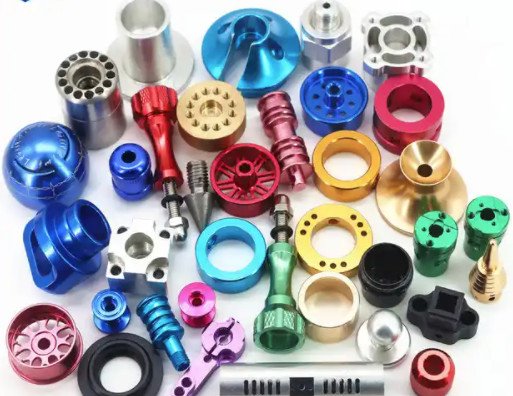
Conclusion
Anodizing aluminum is a robust process that enhances the metal’s durability, corrosion resistance, and aesthetic appeal. By understanding the process steps, types, and critical parameters, professionals can optimize anodizing for specific applications. From aerospace to consumer goods, anodized aluminum delivers reliable performance when executed with precision.
